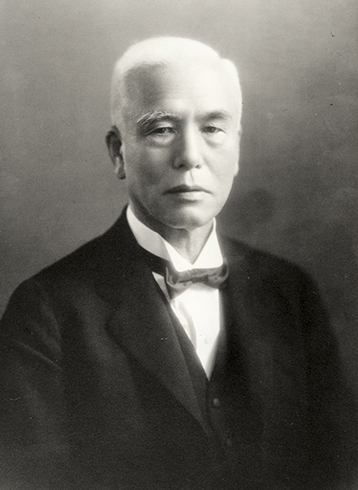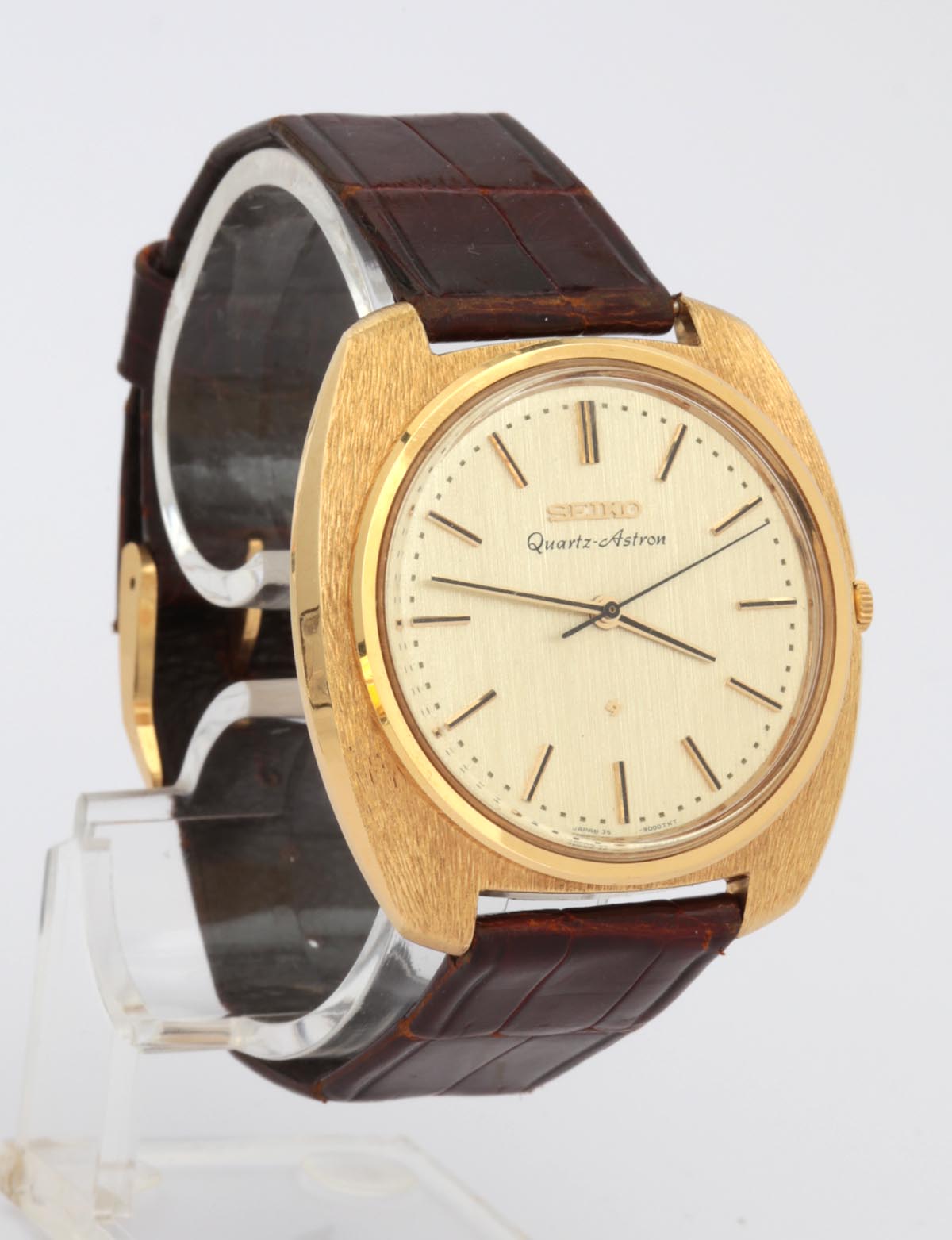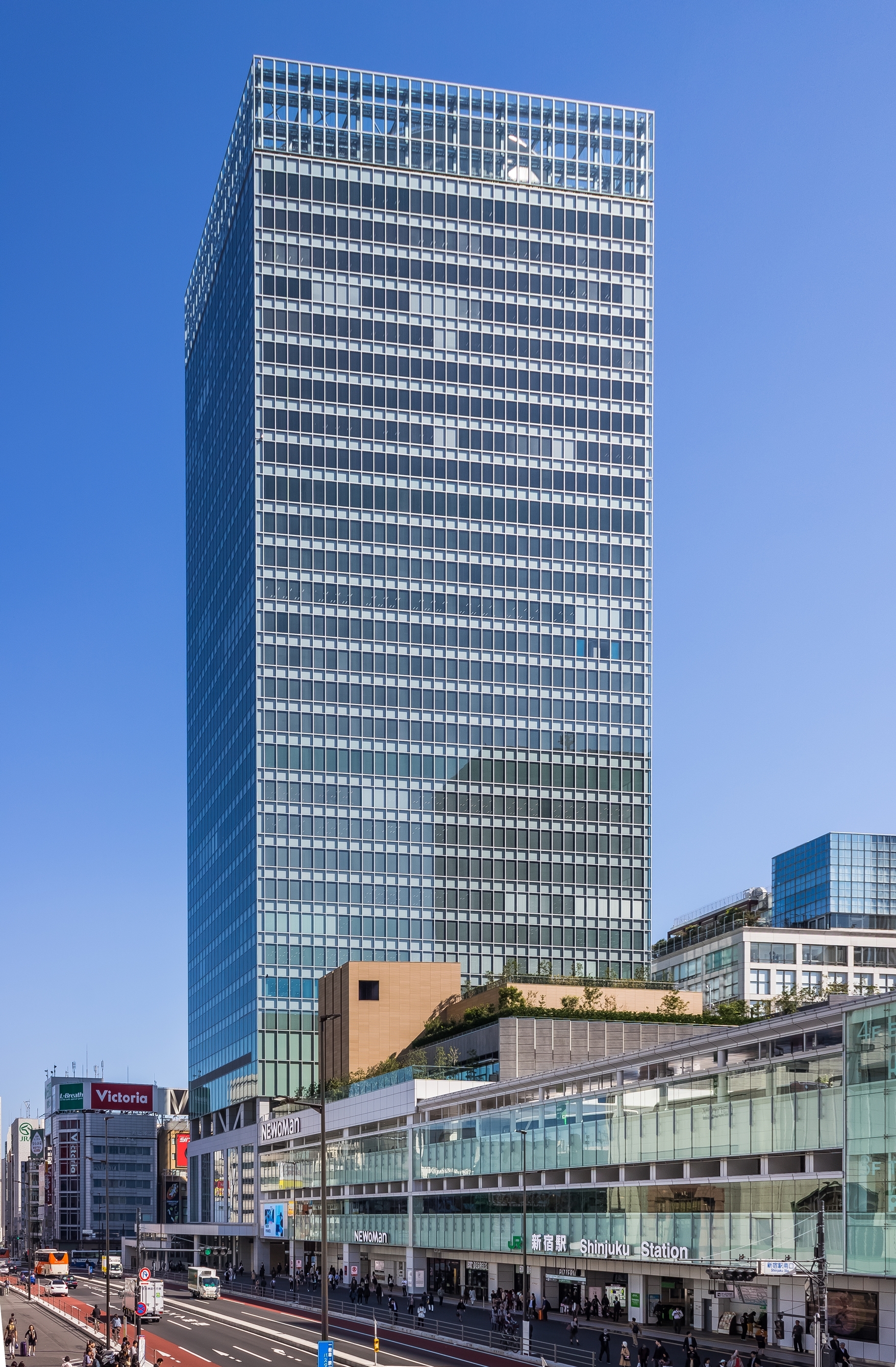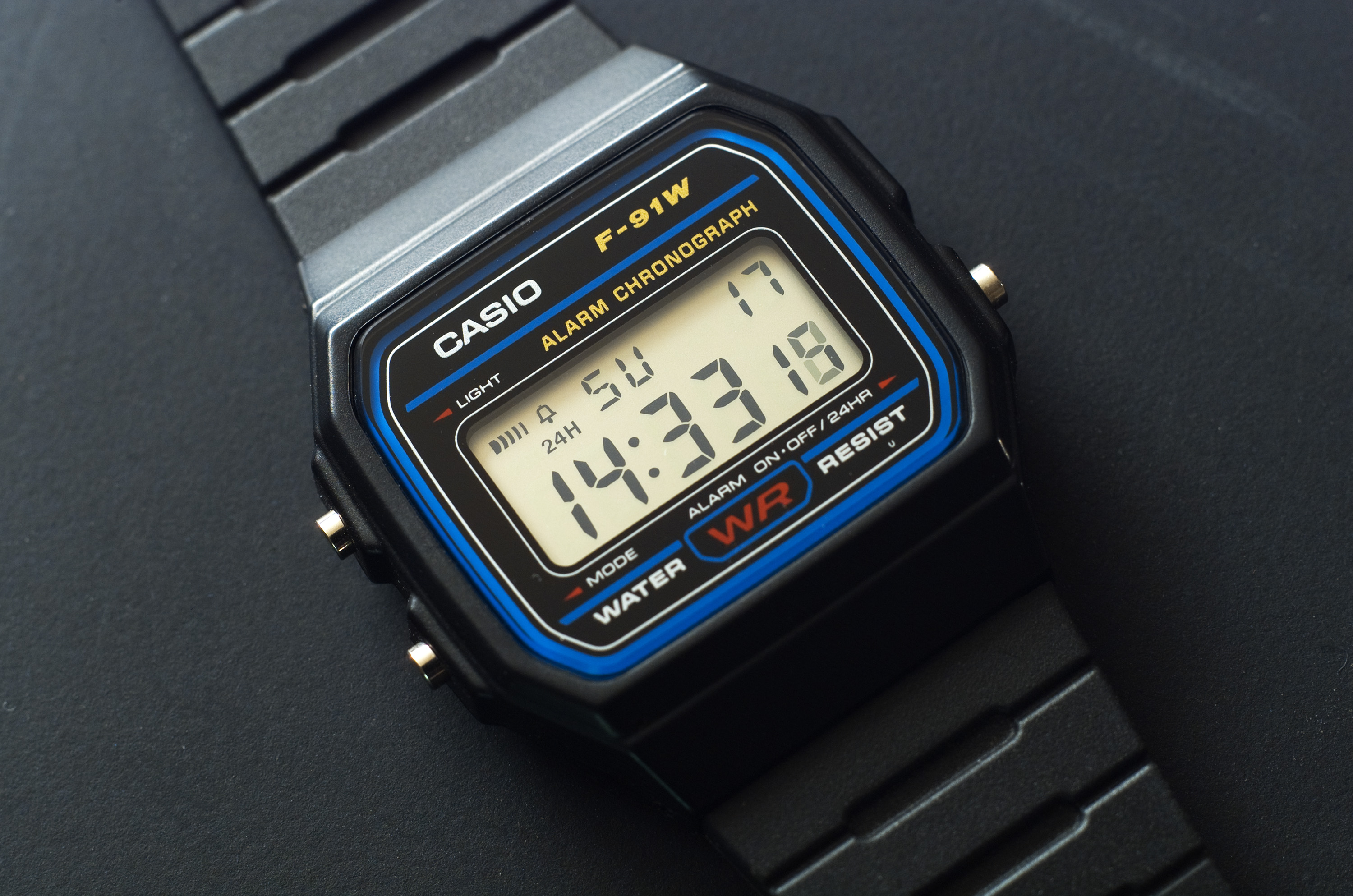|
Seiko
, commonly known as Seiko ( , ), is a Japanese maker of watches, clocks, electronic devices, and semiconductors. Founded in 1881 by Kintarō Hattori in Tokyo, Seiko introduced the world's first commercial quartz wristwatch in 1969. Seiko is widely known for its wristwatches. Seiko and Rolex are the only two watch companies considered to be vertically integrated. Seiko is able to design and develop all the components of a watch, as well as assemble, adjust, inspect and ship them in-house. Seiko's mechanical watches consist of approximately 200 parts, and the company has the technology and production facilities to design and manufacture all of these parts in-house. The company was incorporated (K. Hattori & Co., Ltd.) in 1917 and renamed Hattori Seiko Co., Ltd. in 1983 and Seiko Corporation in 1990. After reconstructing and creating its operating subsidiaries (such as Seiko Watch Corporation and Seiko Clock Inc.), it became a holding company in 2001 and was renamed Seiko Hol ... [...More Info...] [...Related Items...] OR: [Wikipedia] [Google] [Baidu] |
Seikosha
was a branch of the Japanese company Seiko that produced clocks, watches, shutters, computer printers and other devices. It was the root of the manufacturing companies of the Seiko Group. History *1881 — Kintarō Hattori opens the watch and jewelry shop " K. Hattori" (''Hattori Tokeiten'' in Japanese; currently named Seiko Holdings Corporation) in the Ginza area of Tokyo, Japan Japan is an island country in East Asia. Located in the Pacific Ocean off the northeast coast of the Asia, Asian mainland, it is bordered on the west by the Sea of Japan and extends from the Sea of Okhotsk in the north to the East China Sea .... *1892 — is established in Tokyo as the clock manufacturing arm of K. Hattori. *1917 — K. Hattori becomes a company (K. Hattori & Co., Ltd.). *1937 — The watch production division of Seikosha is split off as . *1942 — Daiwa Kogyo, Ltd. is founded in Suwa, Nagano by Hisao Yamazaki. *1943 — Daini Seikosha establishes ... [...More Info...] [...Related Items...] OR: [Wikipedia] [Google] [Baidu] |
Epson
Seiko Epson Corporation, commonly known as Epson, is a Japanese multinational electronics company and one of the world's largest manufacturers of printers and information- and imaging-related equipment. Headquartered in Suwa, Nagano, Japan, the company has numerous subsidiaries worldwide and manufactures inkjet, dot matrix, thermal and laser printers for consumer, business and industrial use, scanners, laptop and desktop computers, video projectors, watches, point of sale systems, robots and industrial automation equipment, semiconductor devices, crystal oscillators, sensing systems and other associated electronic components. The company has developed as one of manufacturing and research and development (formerly known as Seikosha) of the former Seiko Group, a name traditionally known for manufacturing Seiko timepieces. Seiko Epson was one of the major companies in the Seiko Group, but is neither a subsidiary nor an affiliate of Seiko Group Corporation. History Origins T ... [...More Info...] [...Related Items...] OR: [Wikipedia] [Google] [Baidu] |
Seiko Instruments
(SII) is a Japanese company, which develops and commercializes semiconductor, micromechatronics, and precision machining technologies. It is one of the business units of Seiko Group Corporation (f/k/a Seiko Holdings). Headquartered in the Makuhari business district, Mihama-ku, Chiba City, Chiba Prefecture, Japan, the company manufactures and sells electronic components ( crystal oscillators, micromechatronics devices, piezo inkjet printheads, microbatteries, supercapacitors), precision parts, analysis and measurement instruments, machine tools, factory automation systems, printers, etc. History In 1937, , literally the second workshop for manufacturing Seiko timepieces, was established in Kamedo, Kōtō, Tokyo as a spin-off of the watch manufacturing division from , so had been making the Seiko watches until 2020. The company changed its name to Seiko Instruments & Electronics Ltd. in 1983 and to the current name in 1997. Its Suwa Plant in Suwa, Nagano Prefecture ... [...More Info...] [...Related Items...] OR: [Wikipedia] [Google] [Baidu] |
Watch
A watch is a timepiece carried or worn by a person. It is designed to maintain a consistent movement despite the motions caused by the person's activities. A wristwatch is worn around the wrist, attached by a watch strap or another type of bracelet, including metal bands or leather straps. A pocket watch is carried in a pocket, often attached to a chain. A stopwatch is a type of watch that measures intervals of time. During most of their history, beginning in the 16th century, watches were mechanical devices, driven by clockwork, powered by winding a mainspring, and keeping time with an oscillating balance wheel. These are known as '' mechanical watches''. In the 1960s the electronic ''quartz watch'' was invented, powered by a battery and keeping time with a vibrating quartz crystal. By the 1980s it had taken over most of the watch market, in what became known as the quartz revolution (or the quartz crisis in Switzerland, whose renowned watch industry it decima ... [...More Info...] [...Related Items...] OR: [Wikipedia] [Google] [Baidu] |
Wako (retailer)
is a department store retailer in Japan, best known for its flagship store, commonly referred to as the Ginza Wako, located in the heart of Tokyo’s Ginza shopping district. The store is renowned for its watches, jewelry, chocolate, porcelain, dishware, handbags, and upscale imported goods. Wako Co., Ltd. was established in 1947 as the successor to the retail division of K. Hattori (known in Japan as Hattori Tokeiten, now Seiko) and began operations in a temporary location. In 1952, it commenced business in its current building. The Ginza Wako building was originally completed in 1932 as the headquarters of K. Hattori, situated at the corner of the Ginza 4-chome intersection. The Seiko headquarters was later relocated to Toranomon, and in 2016, it moved to Ginza 1-chome. In 2022, the Ginza Wako building was reopened as Seiko House Ginza following renovation work. In addition to its main store, Ginza Wako, Wako operates five branches in the Ginza area, including Seiko Dream Squ ... [...More Info...] [...Related Items...] OR: [Wikipedia] [Google] [Baidu] |
Quartz Clock
Quartz clocks and quartz watches are timepieces that use an electronic oscillator regulated by a quartz crystal to keep time. The crystal oscillator, controlled by the resonant mechanical vibrations of the quartz crystal, creates a signal with very precise frequency, so that quartz clocks and watches are at least an order of magnitude more accurate than mechanical clocks. Generally, some form of digital logic counts the cycles of this signal and provides a numerical time display, usually in units of hours, minutes, and seconds. As the advent of solid-state digital electronics in the 1980s allowed them to be made more compact and inexpensive, quartz timekeepers became the world's most widely used timekeeping technology, used in most clocks and watches as well as computers and other appliances that keep time. Explanation Chemically, quartz is a specific form of a compound called silicon dioxide. Many materials can be formed into plates that will resonate. However, quart ... [...More Info...] [...Related Items...] OR: [Wikipedia] [Google] [Baidu] |
Kintarō Hattori
Kintarō Hattori (服部 金太郎, November 21, 1860 – March 1, 1934) was a Japanese businessman and one of the first and most important Japanese watchmakers in history, as well as the founder of Seiko, one of the world's largest manufacturers of watches. He was a permanent council member of the Japanese Red Cross. Early life Kintarō Hattori was born in Uneme-cho, Kyōbashi, Tokyo, on November 21, 1860, to a well-established family of merchants. At age thirteen, he was initiated in commercial and technical training and was engaged the following year by Kobayashi Denjiro, one of the main watch and clock traders in Japan, where he began his first internship at the Kameda Clock Shop. In 1877, he opened in the Ginza area. Career In 1881, Hattori established his first business , opening his own watchmaking shop. At 25 years old, K. Hattori initiated trade with the Swiss firms based in Yokohama, focusing on wholesaling and retailing of imported Swiss timepieces. After almos ... [...More Info...] [...Related Items...] OR: [Wikipedia] [Google] [Baidu] |
Shiojiri, Nagano
is a city located in Nagano Prefecture, Japan. , the city had an estimated population of 67,240 in 27,602 households, and a population density of 230 persons per km². The total area of the city is . Geography Shiojiri is located in central Nagano Prefecture, in the southern end of the Matsumoto Basin. Surrounding municipalities *Nagano Prefecture ** Asahi ** Ina ** Kiso Town ** Kiso Village ** Matsumoto ** Minamiminowa ** Okaya ** Tatsuno Climate The city has a climate characterized by hot and humid summers, and relatively mild winters (Köppen climate classification ''Cfa''). The average annual temperature in Shiojiri is 11.4 °C. The average annual rainfall is 1161 mm with September as the wettest month. The temperatures are highest on average in August, at around 24.6 °C, and lowest in January, at around -1.1 °C. History Shiojiri is located in former Shinano Province. The name derives from the fact that salt sellers would travel from the shor ... [...More Info...] [...Related Items...] OR: [Wikipedia] [Google] [Baidu] |
Clock
A clock or chronometer is a device that measures and displays time. The clock is one of the oldest Invention, human inventions, meeting the need to measure intervals of time shorter than the natural units such as the day, the lunar month, and the year. Devices operating on several physical processes have been used over the Millennium, millennia. Some predecessors to the modern clock may be considered "clocks" that are based on movement in nature: A sundial shows the time by displaying the position of a shadow on a flat surface. There is a range of duration timers, a well-known example being the hourglass. Water clocks, along with sundials, are possibly the oldest time-measuring instruments. A major advance occurred with the invention of the verge escapement, which made possible the first mechanical clocks around 1300 in Europe, which kept time with oscillating timekeepers like balance wheels., pp. 103–104., p. 31. Traditionally, in horology (the study of timekeeping), the ... [...More Info...] [...Related Items...] OR: [Wikipedia] [Google] [Baidu] |
Ginza
Ginza ( ; ) is a district of Chūō, Tokyo, Chūō, Tokyo, located south of Yaesu and Kyōbashi, Tokyo, Kyōbashi, west of Tsukiji, east of Yūrakuchō and Uchisaiwaichō, and north of Shinbashi. It is a popular upscale shopping area of Tokyo, with numerous internationally renowned department stores, boutiques, restaurants and coffeehouses located in its vicinity. It is considered to be one of the most expensive, elegant, and luxurious city districts in the world. Ginza was a part of the old Kyobashi ward of Tokyo City, which, together with Nihonbashi and Kanda, Tokyo, Kanda, formed the core of Shitamachi, the original downtown center of Edo (Tokyo). History Ginza was built upon a former swamp that was filled in during the 16th century. The name Ginza comes after the establishment of a silver-coin mint (coin), mint established there in 1612, during the Edo period. After a devastating fire in 1872 burned down most of the area, the Meiji government designated the Ginza are ... [...More Info...] [...Related Items...] OR: [Wikipedia] [Google] [Baidu] |
Mechanical Watch
A mechanical watch is a watch that uses a Movement (clockwork), clockwork mechanism to measure the passage of time, as opposed to quartz watches which function using the vibration modes of a piezoelectric quartz tuning fork, or radio clock, radio watches, which are quartz watches synchronized to an atomic clock via radio waves. A mechanical watch is driven by a mainspring which must be wound either periodically by hand or via a Automatic watch, self-winding mechanism. Its force is transmitted through a series of gears to power the balance wheel, a weighted wheel which oscillates back and forth at a constant rate. A device called an escapement releases the watch's wheels to move forward a small amount with each swing of the balance wheel, moving the watch's hands forward at a constant rate. The escapement is what makes the 'ticking' sound which is heard in an operating mechanical watch. Mechanical watches evolved in Europe in the 17th century from spring powered clocks, which appe ... [...More Info...] [...Related Items...] OR: [Wikipedia] [Google] [Baidu] |







